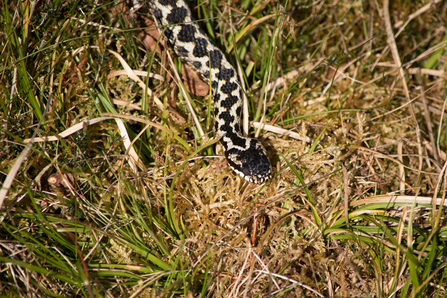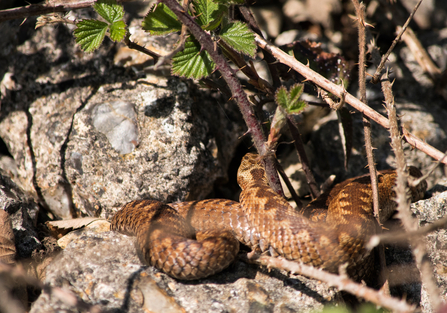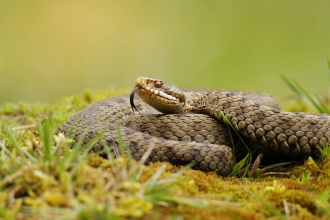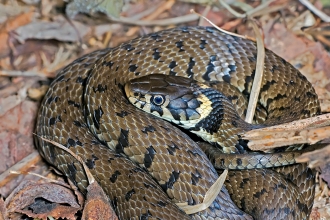This will be my second year doing adder surveys for BBOWT, so I’ll be roaming my local nature reserves in Berkshire to see how many I can find.
I’d wanted to see for them some time, but after several years of searching I’d only found a few adders by myself. They’re not exactly easy to track down, so I jumped at the chance to become a surveyor and get a few pointers from BBOWT.
The best time to see them is in March and April, when they can be found lying around in the sunshine. It’s always exciting to see such an exotic animal on our nature reserves. Unfortunately, though, adders get a lot of bad press.
Yes, they are venomous and should be treated with respect. But they are also shy, timid animals, who want to be left in peace.
I’ve now had over 100 adder sightings and have never known one to be aggressive. I find that if I stay a few metres back, they seem happy to ignore me and carry on basking. I’ve even had one yawn at me!
If they do get scared, they quickly hide under a bush. They only bite if stepped on or picked up, so the best advice is to stay on the path and keep dogs out of the heather.





